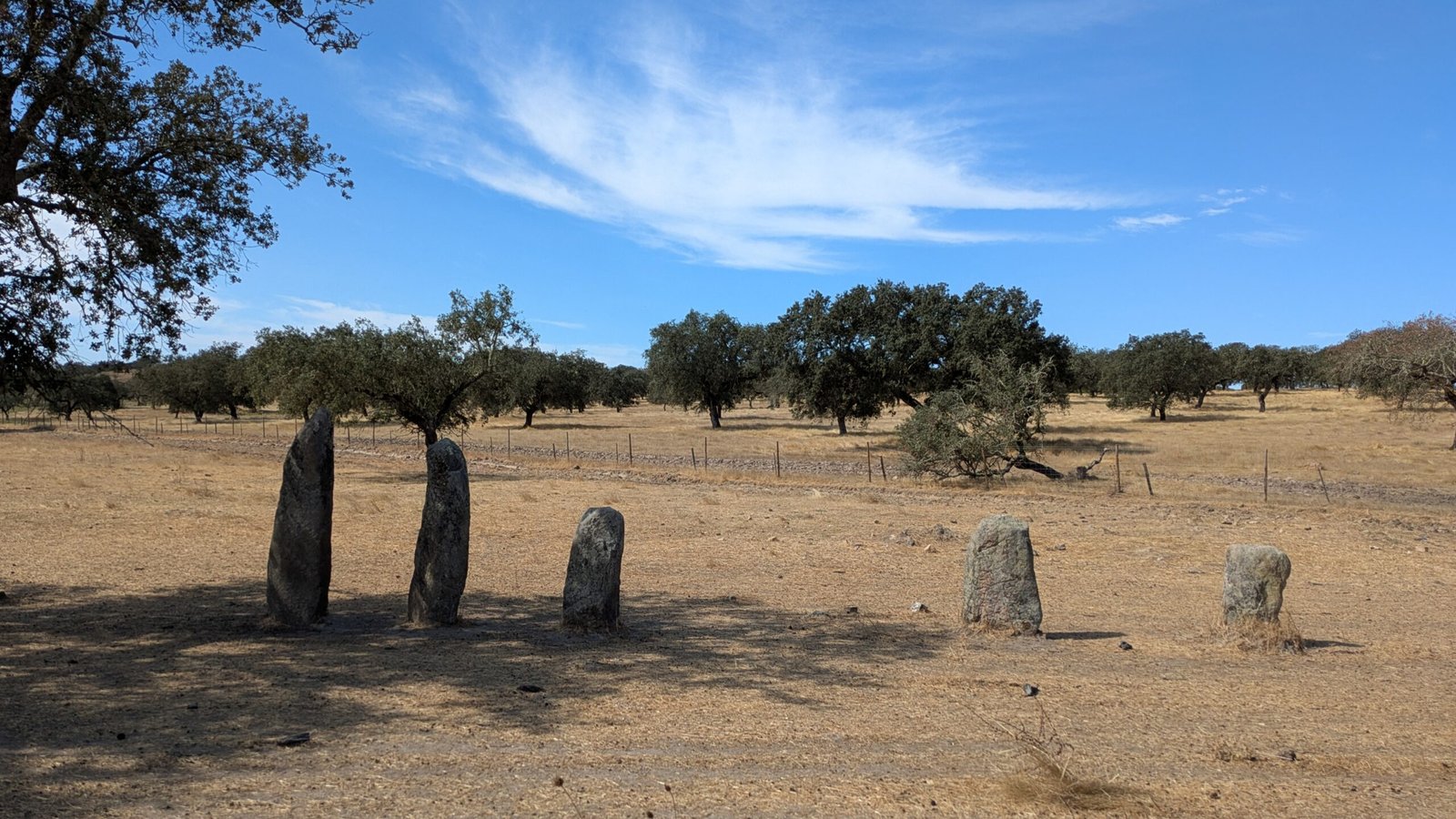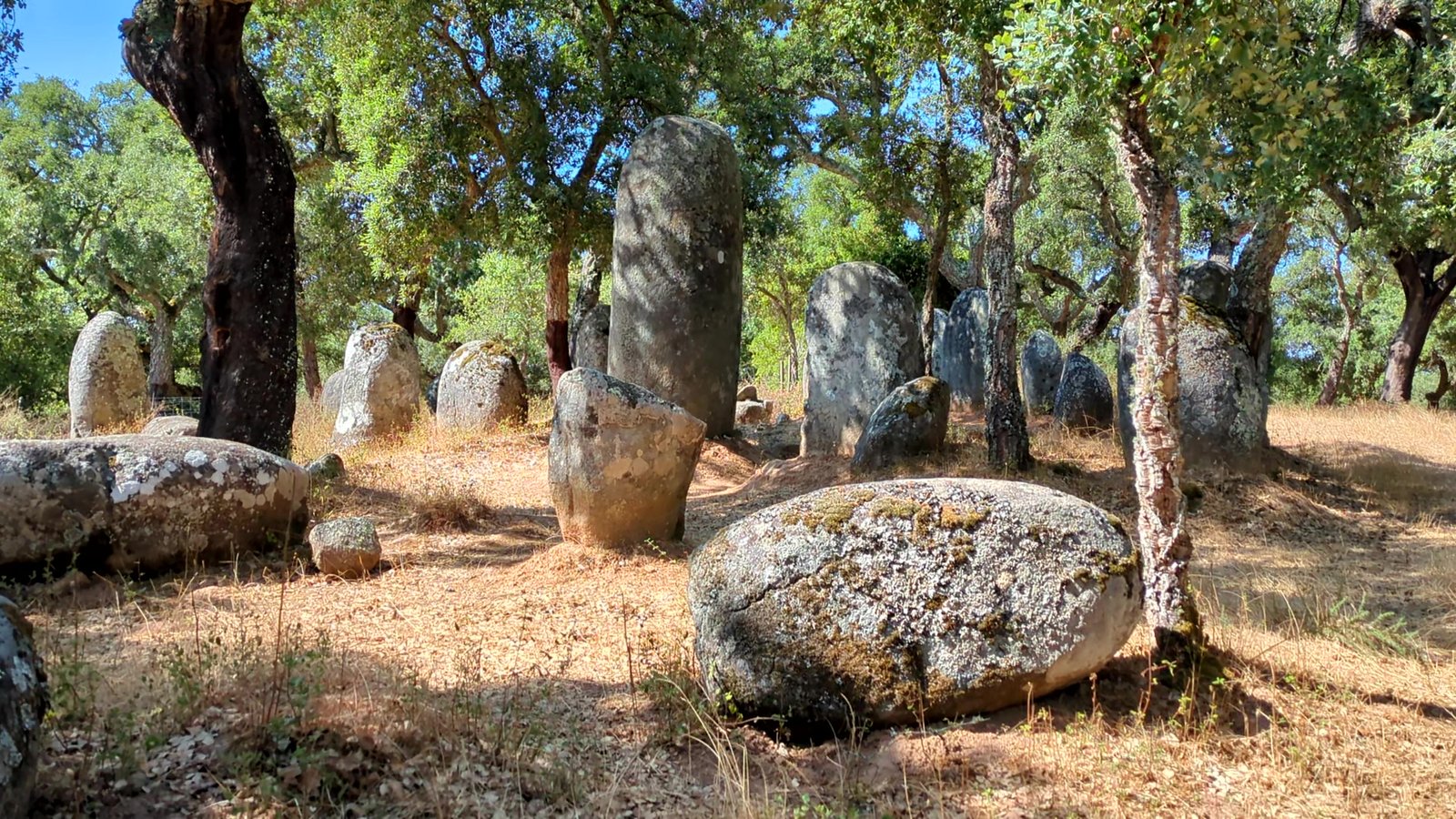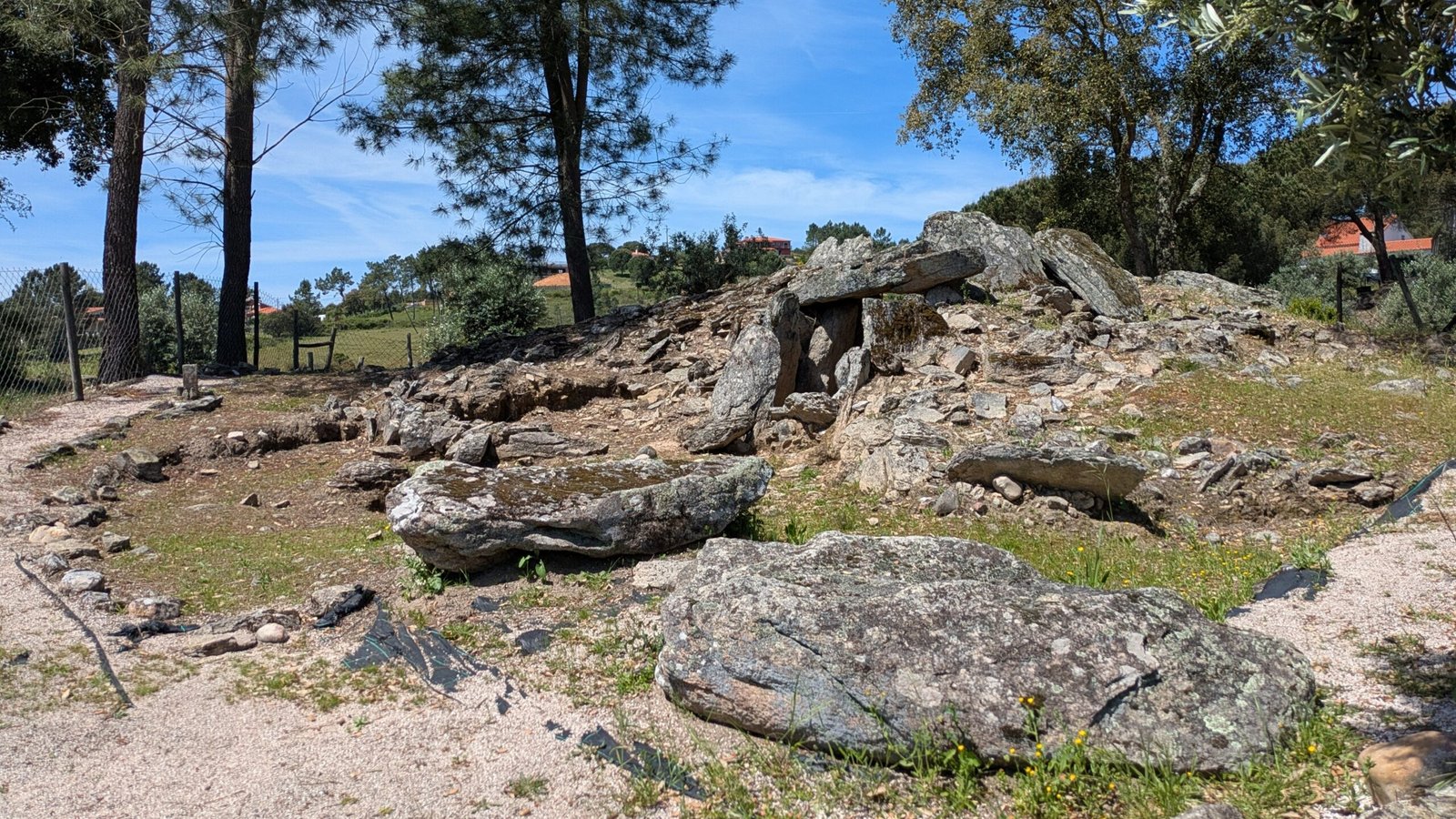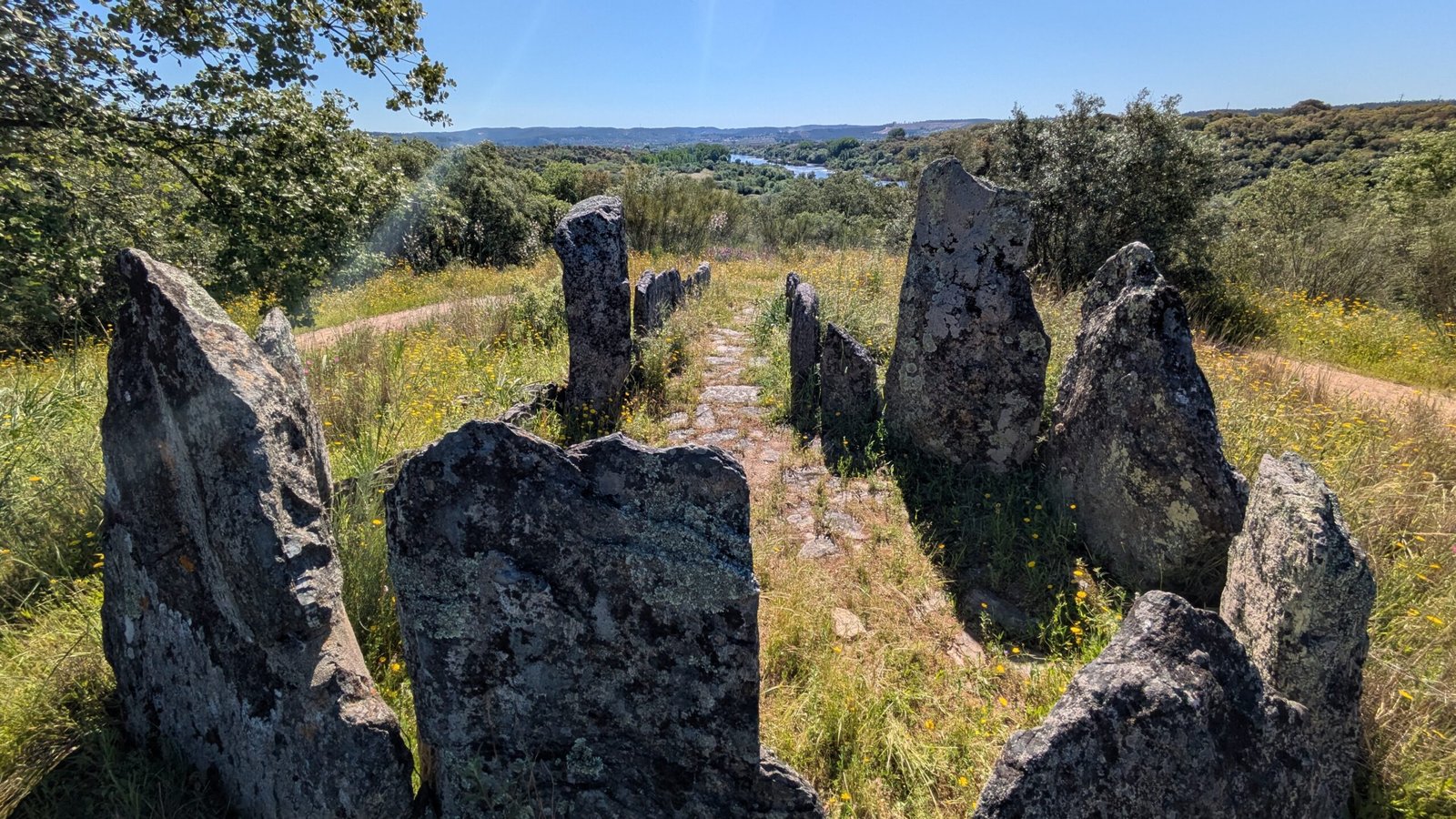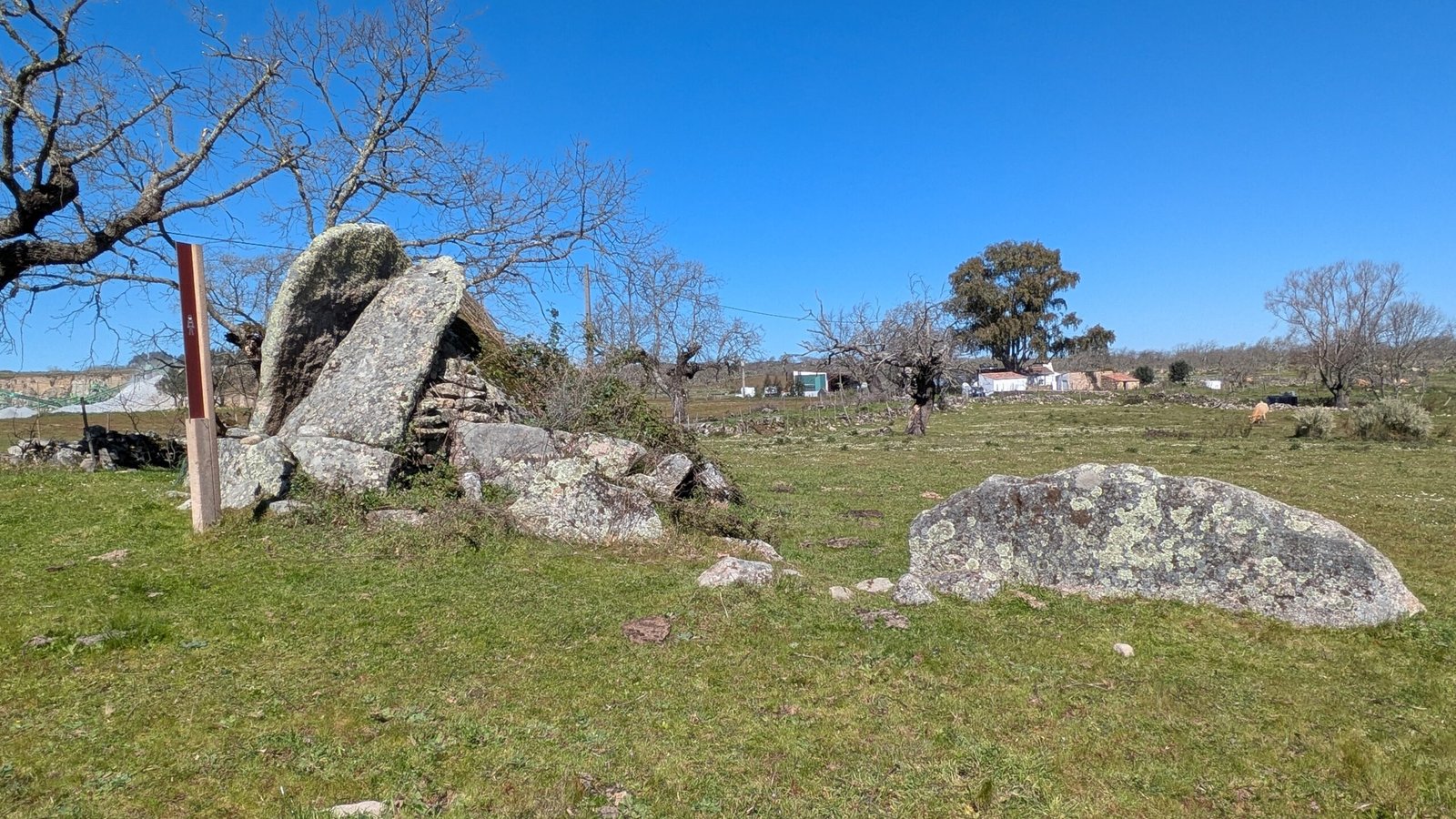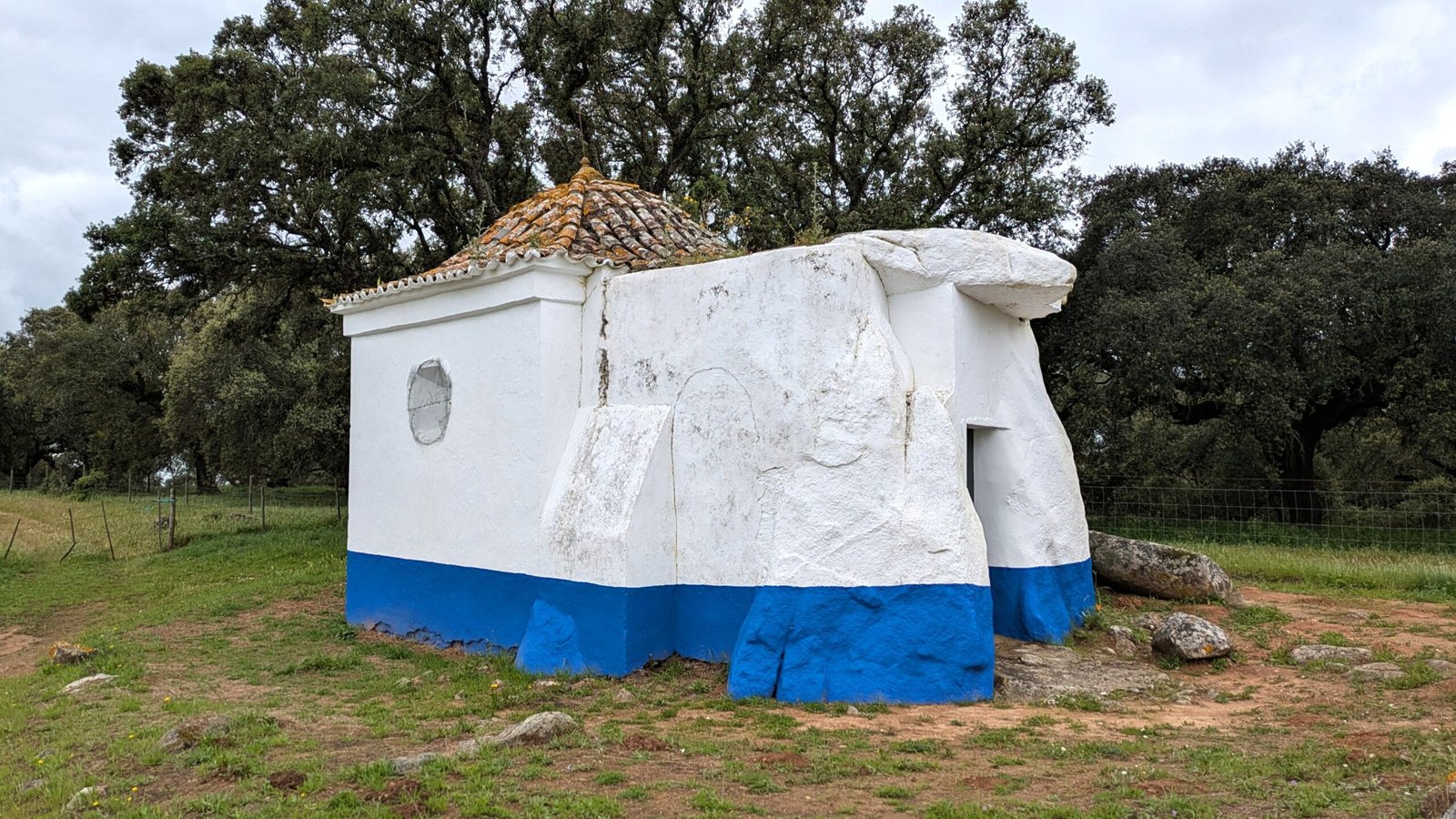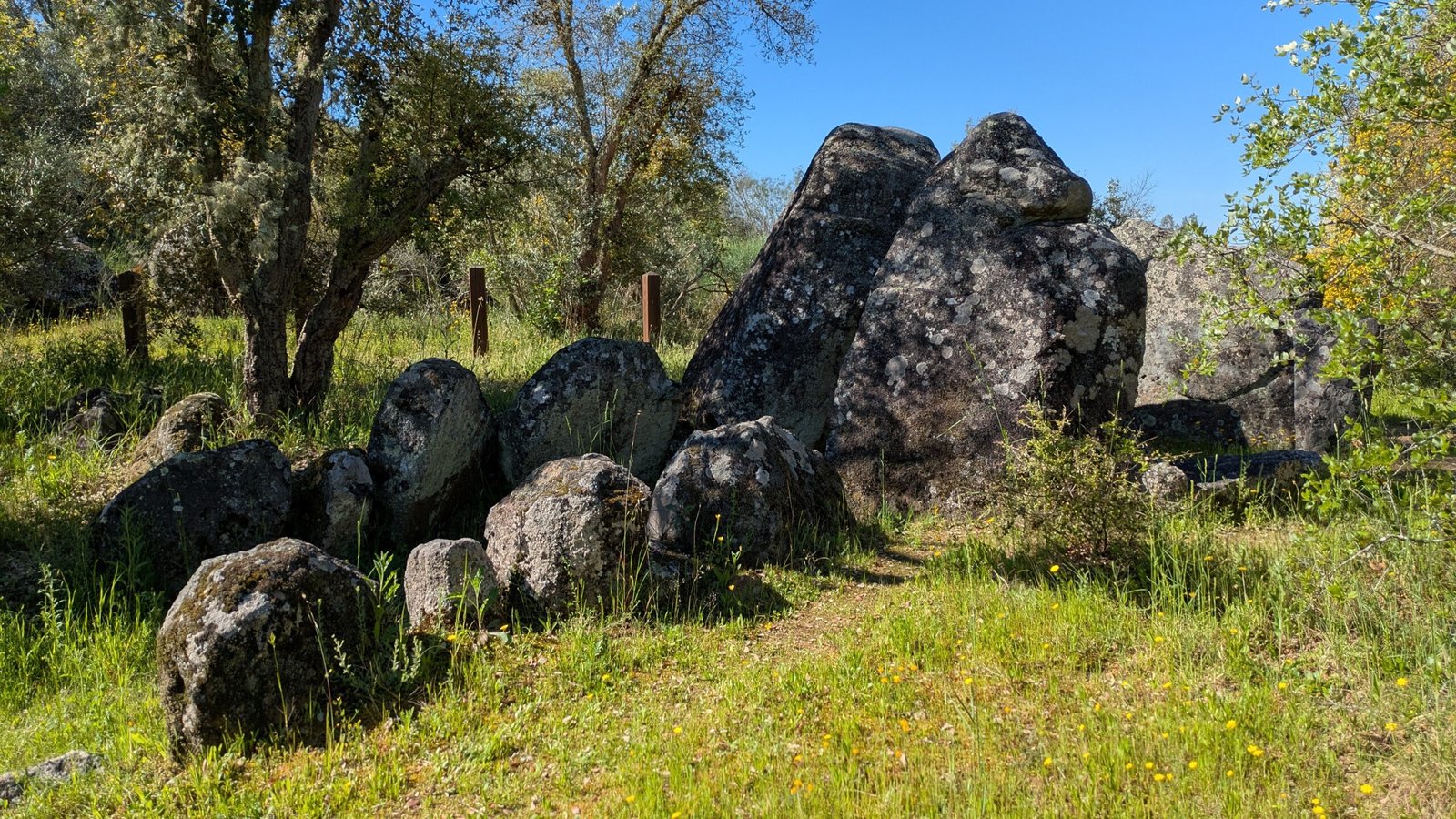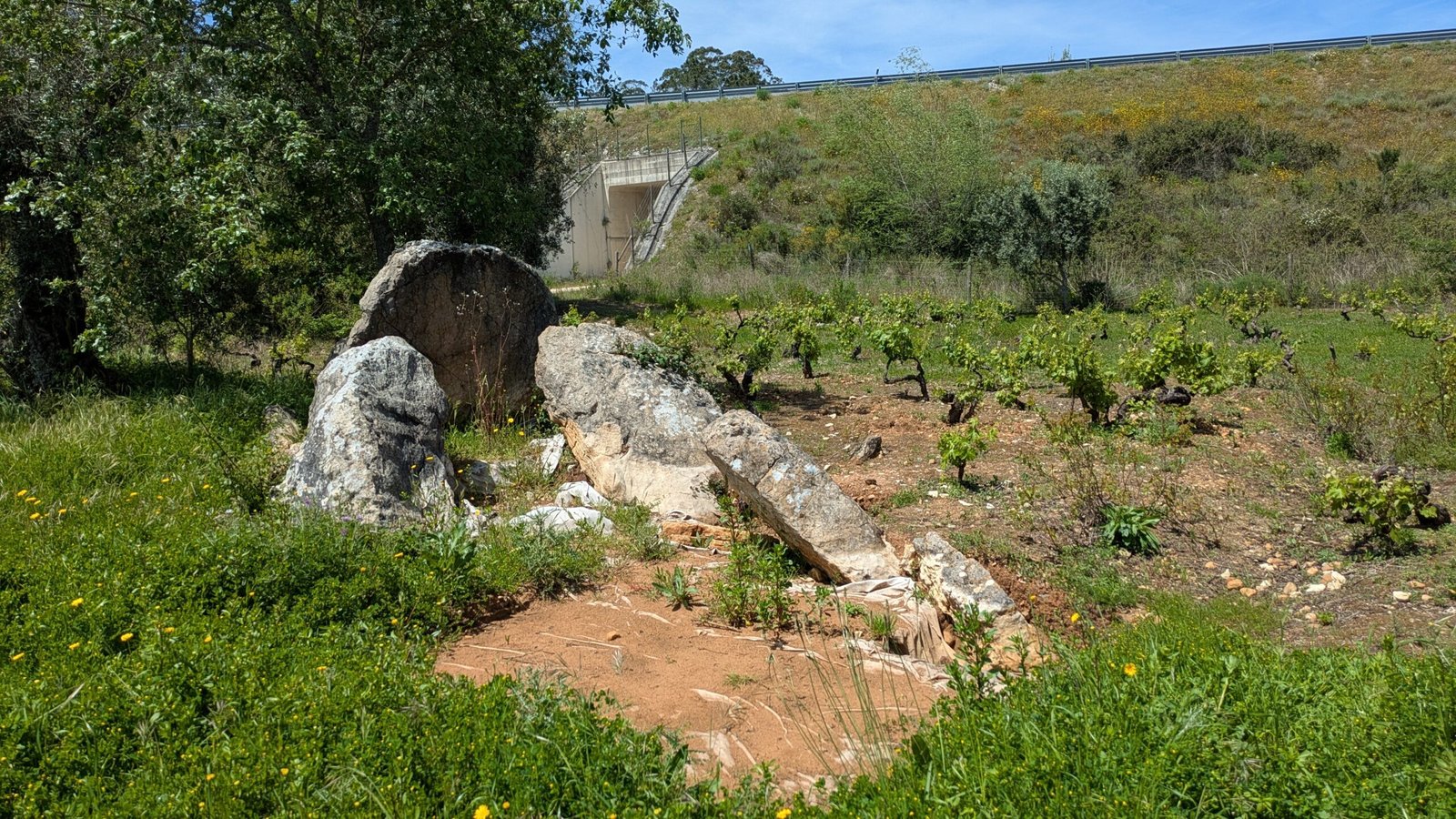The main human relics from prehistoric times are megalithic constructions. (Megalith means “large stones”)
Portugal has hundreds, if not thousands, of megalithic sites. These are broken down into the following categories:
- Tombs
- Standing Stones
- Alignments or circles
Many of these sites are visitable, but some are on private land. As archaeologists excavate these sites, any artefacts of human creation are kept in museums or universities.
Use the map at the right to search among the various megalithic sites (highlighted map markers indicate megaliths that are described on this website), or browse through the entries below. More posts are added as sites get visited.
-
Conjunto Megalítico do Monte de Têra
Also known as: Alinhamento da Têra, Alinhamento do Monte de Têra Standing tall with flocks of sheep to keep them company, the stone pillars line up from East to West. There are gaps in their formation revealing the loss of some of their number over the thousands of years they have stood here. The five…
-
Cromeleque de Vale d’El Rei
Also known as: Cromeleque do Monte da Têra, Cromeleque do Monte das Figueiras, Recinto Megalítico de Vale d’El Rei Walking among these perfectly arranged stones on an Alentejo hilltop, you can almost feel the ancientness of the land. These stones were placed here six or seven thousand years ago, and likely were being used and…
-
Cromeleque da Portela de Mogos
Also known as: Cromeleque da Portela de Modos Walk up the small hill, through the Alentejo cork oak forest. The wind blows through the trees, rustling the leaves. Up ahead, stand a group of still grey shapes. These stones have stood here for millennia, both upright and laying down. Once again they stand tall, dwarfed…
-
Menires do Alto da Cruz
Also known as: Cruciforme Megalítico do Alto da Cruz, Cromeleque Cruciforme do Alto da Cruz English translation: “Menhirs of Peak of the Cross”, or “Megalithic Cross-Shape…” or “Cross-Shaped Cromlech…” The wind blows gently through the trees and grass on the top of the Alentejan hill. On a cement block stands a tall geodesic marker. The…
-
Anta do Vale da Laje
Also known as: Anta 1 do Vale da Laje, Anta do Casalinho 1 Walk around the grey stones, noting the structure both in the centre and surrounding it. This was an incredibly important construction for thousands of years, used by people for burials and possibly more. The current buildings around it seem oblivious: do the…
-
Anta da Foz do Rio Frio
Also known as: Anta da Casa dos Mouros In the sunshine, the light glints off the river below. Birds and insects fill the air with sound, competing with the hum of traffic on the bridge across the river. A riot of wildflowers splashes the green vegetation with yellows, pinks, and more. It’s a gorgeous and…
-
Parque Megalítico dos Coureleiros
Also known as: Necrópole Megalítica dos Coureleiros, Antas dos Coureleiros Walk along the road leading through the farmland: paddocks on either side of you, with the occasional herd of cows. The constant thumping of the nearby rock quarry provides an unpleasant soundtrack for your visit to this “park.” But if you persist, you can see…
-
Anta-Capela de São Brissos
Also known as: Anta-Capela de Nossa Senhora do Livramento, Anta Ermida de Nossa Senhora do Livramento, Anta de São Brissos, Anta do Livramento In a field in the Alentejo plains, stands a Catholic chapel. Painted in traditional blue and white, it stands out in the green landscape. It’s only on coming closer that you see…
-
Anta do Penedo Gordo
Walk through the sunny forests on the hills above the Tejo River. Enjoy the birdsong and wildflowers. As you round a bend on the trail, marvel at the enormous stone slabs standing over 2m tall. They have been standing there for 5,000 years. This anta (“dolmen” – megalithic chambered tomb) was built during the Late…
-
Anta de Azurrague
Also known as: Anta do Zurrague, Anta do Azurrague 1 This anta (dolmen) is currently (from 2024) being excavated by archaeologists on a project titled MEDICE (Memórias, Dinâmicas e Cenários da Pré-história à Época Romana). There are few known antas in the area, and few published reports of this anta. The anta has been seriously…

